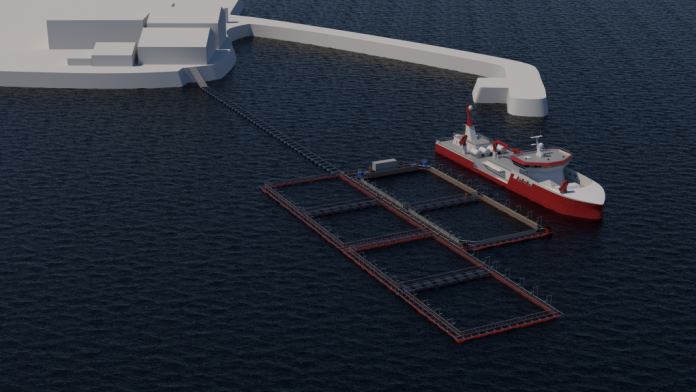FiiZK (formerly Botngaard) will supply a closed-containment waiting cage with water purification faclities to salmon processor Salmosea, which will be used to hold harvestable salmon that have PD (pancreas disease) and lice.
In this way, the harvest plant will avoid direct discharge from the wellboat in connection with sanitary harvest, freeing up the vessels’ capacity for other purposes.
“With closed-containment, we are ensuring stable access to salmon to the harvest plant, and reduce the costs associated with sanitary harvest,” said Salmosea CEO Ståle Ramstad, in a press release.
Seafood processing Salmosea offer harvest services to its owners, Midt Norsk Havbruk, Bjørøya and SalmoNor as well as other salmon farmers.

The closed waiting cage has a capacity of 700 tonnes of salmon and is installed next to existing waiting cage facilities. The floating cages’ steel pipes measure 30 × 70 meters. A powerful industrial PVC cloth separates the fish, and seawater is pumped in powered by mixers.
Control
The cage environment is continuously monitored and documented by a sensor network. Oxygen is added automatically when needed. The wastewater is pumped out of the cloth and into a proper water purification line with filter and UV.

Magnus Stendal, Fiizk
“The first closed waiting cage was delivered to Kråkøy Butchery, and has been in operation since 2015,” said FiiZK Business Development Manager Magnus Stendal.
Evolved
“We have now further developed this concept. We have retained the principles of the pilot plant, but changed the structure of the plant, and most technical solutions. The closed -containment waiting cage to Salmosea will be the most advanced closed-cage delivered,” he added.
FiiZK experienced an increase in inquiries about closed waiting areas before the summer, and is working on designing facilities for harvest plants in both Norway and abroad.
“We believe this technology will be a natural part of the infrastructure for many salmon harvest plants in the future,” Stendal concluded.

